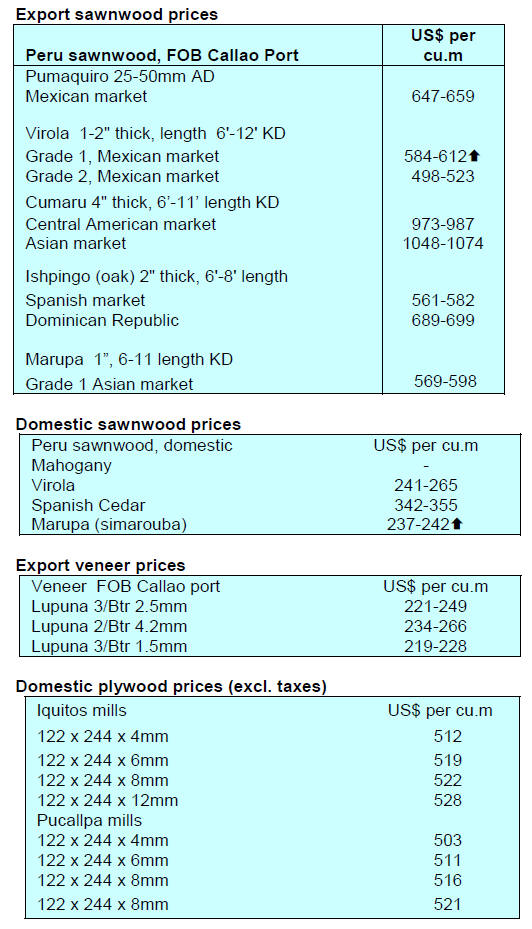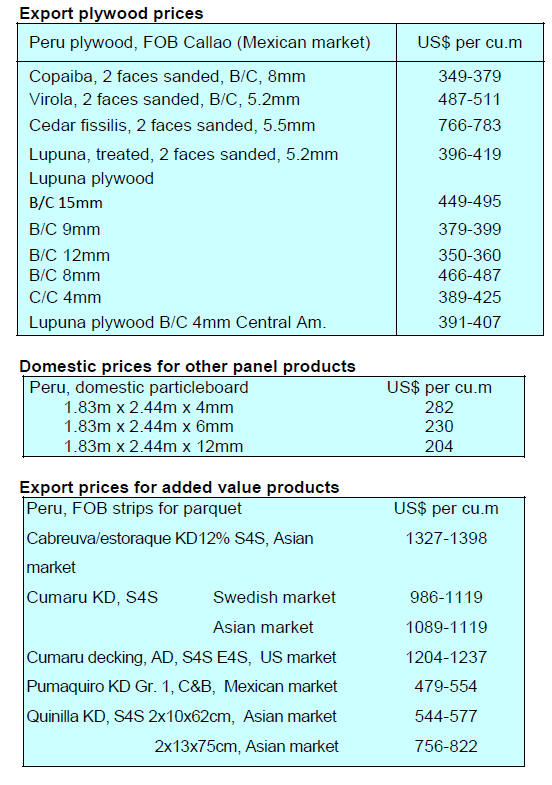4.
INDONESIA
Encouraging business in ‘Lightwood’
products
In an effort to boost the domestic lightwood industry the
Ministry of Trade held a Lightwood Cooperation Forum.
The Director General of Export Development in the
Ministry of Trade said the country needs to change its
image as a producer of commodity wood products to one
known for innovation and sustainability.
If this can be achieved in parallel with Indonesia’s Timber
Legality Verification System (SVLK) markets will open
around the world as Indonesia will have a competitive
advantage over products from other countries.
Marolop Nainggolan, Director of the Export Development
Cooperation, said lightwood can be a solution to support
the production of sustainable wood products in the
country.
See:
https://www.validnews.id/Kemendag-Dorong-Ekobisnis-Komoditas-Kayu-Ringan--cIX
Business forum a success
The second Indonesia-Latin America and Caribbean (INALAC)
Business Forum held in early November generated
business deals worth over US$70 million. This was double
that achieved last year according to Indonesia’s Foreign
Minister, Retno Marsudi.
Of the many products promoted the furniture and
handicraft manufacturers did well as did those pushing
food and beverages and coconut charcoal. The Ministry of
Foreign Affairs, in collaboration with other ministries and
agencies organises the INA-LAC forum to bring together
Indonesian and the Latin American/Caribbean businesses.
See:
https://en.antaranews.com/news/161008/ina-lac-businessforum-posts-agreements-worth-us7102-mln
In related news, the Indonesian Ambassador to Kuwait,
Tri Tharyat, has urged Indonesian charcoal producers to
explore the market for charcoal in Kuwait where people
enjoy cooking on charcoal during family gatherings.
Developing economic stability for the forestry sector
In launching the ‘APRIL2030’ plan built around the 2020-
2024 National Medium-Term Development Plan (RPJMN)
in the fields of Environment, Disaster Resilience and
Climate Change, the Coordinating Minister for Economic
Affairs, Airlangga Hartarto, highlighted targets for
sustainable forest development.
He explained that there are 3 three main issues that need to
be addressed. The first is climate change and stakeholders
in the forestry sector are expected to play an active role in
climate change adaptation and mitigation, in promoting
environmentally friendly industrial development and a
focus on low-carbon outputs.
The second issue is environmental protection and
preservation. The Minister called for wider adoption of
reduced impact logging, biodiversity protection,
management of conservation areas, development of
environmentally friendly products, certification and forest
fire prevention.
The final issue concerns community empowerment which
he said can be achieved through community involvement
in social forestry programmes.
See:
https://www.liputan6.com/bisnis/read/4411187/pemerintahsoroti-3-isu-utama-bangun-ekonomi-berkelanjutan-di-sektorkehutanan
Food estate programme in protected forests attracts
criticism
A regulation from the Ministry of Environment and
Forestry that allows forests to be converted to farmland to
support the government’s food estate programme has
attracted negative comments according to the Indonesian
Forum for the Environment (Walhi). The ministerial
regulation on forest re-designation for food estate
development allows forests in both protected and
production areas to be converted into farmland.
The Regulation says that protected forest zones can be
converted into Forest Zones for Food Security (KHKP) as
long as the forest does not entirely function as a protected
forest. Ministers, Governors, Heads of State Bodies,
Regents and Mayors can request a permit from the
Minister to convert both production and protected forests
into KHKP.
See:
https://www.thejakartapost.com/news/2020/11/16/foodestate-program-in-protected-forests-may-lead-to-massivedeforestation-walhi.html
Use domestic products for government projects to
support domestic industries
The President has been urged to limit the use of imported
goods for government projects if domestically made items
are available.
The Chairman of the Indonesian Furniture and Crafts
Industry Association (Himki), Abdul Sobur, has reported
that the number of companies failing is still rising and this,
along with weak demand, has resulted in jobs being shed.
He pointed out that payment of social assistance, while
vital for many, cannot replace the advantages from
keeping businesses afloat.
Sobur explained that the majority of furniture and craft
industry entrepreneurs are labor-intensive SMEs and are
scattered across the country and have received little
support while it is importers which have benefitted most
from government procurement.
He said the government National Economic Recovery
(PEN) budget of Rp 695.2 trillion should be used to
support the local industry not to benefit importers.
Enny Sri Hartarti, economist at the Institute For
Development of Economics and Finance (INDEF)
attributed the low absorption of domestic products in
government procurement to the Government Procurement
Policy Institute (LKPP) which needs to make adjustments
to its regulations.
See:
https://nasional.kontan.co.id/news/selamatkan-industridomestik-jokowi-diminta-mengerem-impor-untuk-proyekpemerintah
5.
MYANMAR
Extension of
Covid-19 preventive measures
The government has extended the country’s COVID-19
preventive measures until December 15 as the number of
cases continues to increase. The number of new cases
spiked after the general election on 8 November with cases
reaching a peak of 1,500 compared to 1,300 before the
election. The government requested people to stay-home
for two weeks from 21 November to 5 December.
Teak tender sales online
The Myanma Timber Enterprise (MTE) has announced an
online tender sale of teak in a bid to maintain log supplies
to processing plants. Recently, MTE tested the online
bidding system for inn-kanyin logs.
The teak logs to be offered are made up of 715 tons of
SG6/SG7 and 5,350 tons of other hardwoods. The online
tender will be conducted 4 December 2020.
In other news the MTE announced the harvesting plan for
2020-21 showing the sharp decline on previous years. The
plan is for 3,549 teak trees to be harvested (approx.4,000
tons) and 99,814 Trees (approx. 200,000 tons) for other
hardwoods from five extraction agencies located in three
Regions.
See:
http://www.mte.com.mm/index.php/en/annoucements/1372-19-11-2020-2
FLEGT activities continue
In an online commentary U Myo Min, Advisor to the
Myanmar Forest Products and Timber Merchants
Association, talks about development of the FAO-EU
FLEGT work programme. He writes; Since 25 September
2020 MERN has been facilitating Multi-stakeholder
groups for development of the FAO-EU FLEGT work
programme (2020-2021) by holding visual consultation
workshops the whole states and regions of Myanmar.
See:
http://mernmyanmar.org/states-and-regions-visualconsultation-workshops-for-development-of-fao-eu-flegt-workprogramme-2020-2021/?fbclid=IwAR2yBkczSOwnlqgnKP1Ky2raEbp7jIrfpepxNGjY2U-AO0LPrJ4_Al-SvhU
With support of FAO, a number of key tasks and questions
have been posed and priority actions to fulfill short-term
and medium-term FLEGT objective have been identified
at all state and region consultation workshops.
A national FLEGT workshop was held in November 2019
to reorient FLEGT work in Myanmar towards more
concrete and attainable short-term and medium-term
FLEGT objectives in support of strengthened forest
governance.
It was agreed that FLEGT work should “help promote
legal harvest according to the laws of Myanmar, focusing
on public access to information on applicable legislation
as defined in the EU Timber Regulation (EUTR), as well
as other relevant information related to legal timber
harvest – which are all necessary to allow to adequately
assess the risk of illegally harvested wood or derived
products entering the supply chain and to take adequate
measures to mitigate these risks.”
Investment policy review
With assistance from the Organization for Economic
Cooperation and Development (OECD) Myanmar has
published its second investment policy review which
identifies reforms ranging from means to attract
responsible investment, establishing special economic
zones, strengthening the implementation of environmental
impact assessments and fostering secure and well-defined
land rights.
Among the recommendations it suggested the government
evaluate the economic costs of the remaining restrictions
on foreign participation in the financial, construction and
retail distribution sectors. Also, it was suggested that an
evaluation be made of the costs and benefits of the
remaining restrictions on foreign investment in the
manufacturing sector where there is no national defense or
security issues.
Among several recommendations for promoting
responsible business, it suggested the government boost
transparency in Myanmar’s extractive industries beginning
with state-owned enterprises due to their importance to the
economy.
The policy review also urges Myanmar to ensure that
environmental considerations are included in early
screening of proposed investments by the Ministry of
Investment and Foreign Economic Relations (MIFER), the
Ministry of Natural Resources and Environmental
Conservation (MONREC) and other relevant ministries.
See:(https://www.irrawaddy.com/news/burma/myanmars-secondinvestment-policy-review-urges-further-liberalization.html
Trade weakens as COVID-19 control measures bite
Myanmar’s trade in the first five weeks of fiscal 2020-21
declined by about US$1.5 billion when compared to the
same period of last year as a result of COVID-19. Despite
the downward trend, the Ministry of Commerce has raised
its trade target for the current fiscal year by US$1 billion
to US$34.7 billion with US$16.2 billion in exports and
US$18.5 billion in imports expected.
Exports have so far borne the brunt of COVID-19 but
agriculture exports are on the rise, which aligns with the
government’s plan to boost trade this year. Myanmar is
planning to invest in raising production of agricultural
crops so as to raise exports to offset the decline in demand
for garments.
6. INDIA
Wholesale price
indices for wood products
The Office of the Economic Adviser, Department for
Promotion of Industry and Internal Trade, has released
wholesale price indices in India for the year to October
2020. In the second and third quarter there was a
considerable rise in the price index for wood panels but
prices for veneers dipped. The sawnwood price index fell
slightly throughout the second and third quarter of 2020
but reversed direction in October.
See:
https://eaindustry.nic.in/pdf_files/cmonthly.pdf
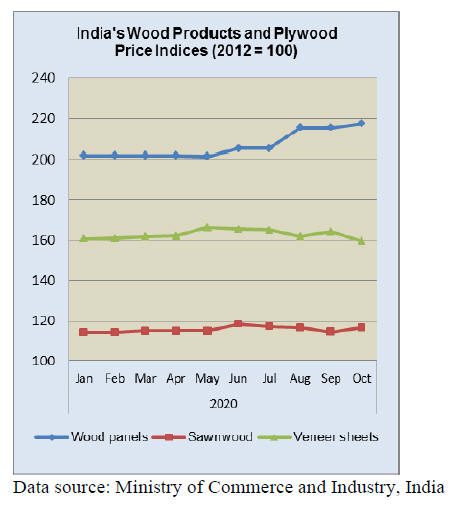
India continues to seek exemption from
rosewood
trade ban
The Standing Committee of the Convention on
International Trade in Endangered Species of Wild Fauna
and Flora (CITES) recently concluded its 70th meeting
agreeing measures to achieve full compliance with
international wildlife trade regulations.
The meeting held in Sochi, Russian Federation, attracted a
record number of participants with over 700
representatives from more than 80 States and over 100
intergovernmental and non-governmental organizations.
On the sidelines of the meeting representatives of the
Indian government and Indian rosewood importers
discussed the ongoing efforts to have sustainably
harvested India rosewood exempted from the current trade
ban.
Demand for imported logs improves
The recent weakening of the US dollar against major
currencies has given importers a boost and there has been
a rise in imports of some wood products needed to satisfy
the beginnings of recovery in demand in the Indian
market.
Plantation teak shipments are now arriving and being
distributed to traders and manufacturers as there are few
restrictions on transportation now.

Locally milled sawnwood
Demand for imported sawnwood is steady and the
weakening of the US dollar has allowed replacement of
stocks at favourable prices. Demand in the urban areas is
beginning to recover but it is still in the rural areas
especially the NE of the country is where demand is
strongest.
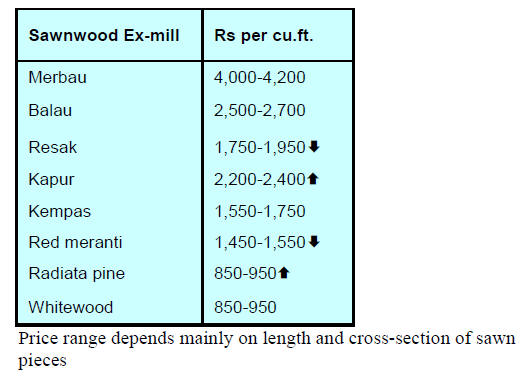
Myanmar teak
The current rise in demand has pushed down available
stocks which resulted in rising prices. As demand for
Myanmar teak is concentrated among high net worth
customers the prices increases have been accepted. As of
the end of November imports from Myanmar are yet to
resume.
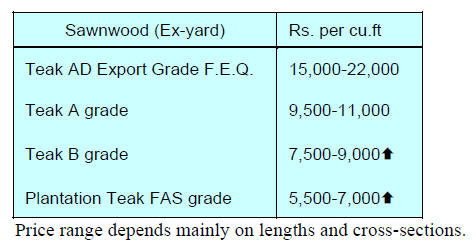
Sawn hardwood prices
There are signs of improvement in demand and importers
have been taking advantage of amended export prices for
US timbers.

Plywood
Production and sales are improving and mills are keen to
raise panel prices as log costs are trending higher. In
recent weeks mills with a good market share have secured
modest price increases. Traders report demand for woodplastic
products is rising.
Labour issues still plague mills. Workers in factories in the
north of the country are back at work but the resumption
of work in the south of the country has been slow.
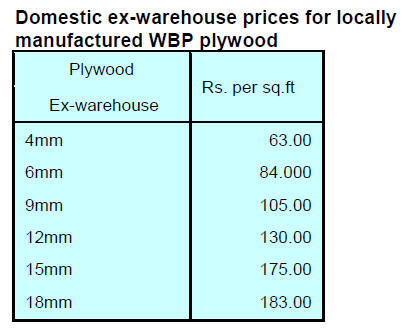
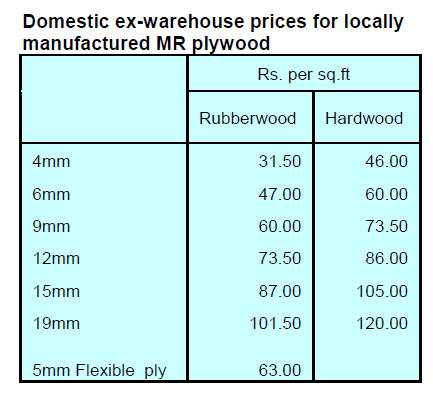
2021 Delhi Wood
The 7th International Trade Fair for Furniture Production
Technologies, Woodworking Machinery, Tools, Fittings,
Accessories, Raw Materials and Products, ‘Delhi Wood’
will be held 4 - 7 March 2021. The organisers say ‘Delhi
Wood’ is Asia's largest sourcing platform for furniture
manufacturers, wood-based handicraft makers, sawmillers,
craftsmen, woodworking professionals, builders, architects
and interior designers in the region.
Highlights of DELHIWOOD 2019: 600+ Exhibitors, 12
Country pavilions/ Group participations, 40,000 square
metres of exhibition space, 300 demos of woodworking
machines, seminars and forums for businesses, workshops
and interactive platforms for architects, interior designers
and builders.
See: www.delhi-wood.com
7.
VIETNAM
Vietnam’s tropical
timber imports
Vietnam imports around 1.5 million cubic metres rwe of
tropical timber annually accounting for about 30% of total
log and sawnwood imports from all sources. Timbers
imported into Vietnam are mainly from Africa, Papua
New Guinea, Laos and Cambodia.
The following analysis has been made possible with data
provided by the General Department of Customs, Vietnam
and analysed by VIFOREST: Vietnam Timber & Forest
Products Association, BIFA: Binh Duong Wood
Processing Association, DOWA: Dong Nai Wood
Processing Association, FPA BD: Forest Products
Association of Binh Dinh Province, HAWA: Handicraft
and Wood Association of Ho Chi Minh City, with support
from Forest Trends.
At the end of this section are tables listing species and
sources for log and sawnwood imports. These original
tables have not been checked for spelling. With such a
wide variety of species being imported the term Lesser
Used Species (LUS) could fast become redundant.
Imports from Africa
Vietnam annually imports 1.3 million cubic metres (rwe)
from around 20 African countries. These imports from
African countries represent around 25% of total timber
imports into Vietnam.
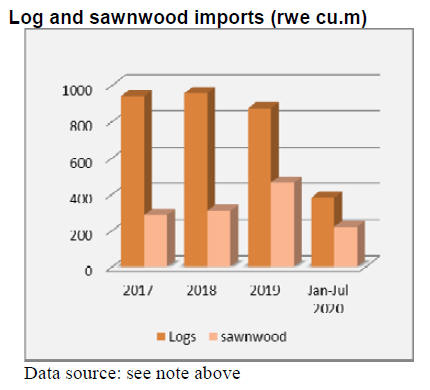
Log and sawnwood imports from Laos
Laos was once once a major supplier of tropical logs and
sawnwood to Vietnam. Order No.15 issued by the Prime
Minister of Laos in May 2016 prohibited the export of
primary wood products so Vietnam’s timber imports from
Laos dropped sharply. On average, Vietnam imports
annually just 5 – 6,000 cu.m of logs and 50,000 – 60,000
cu.m of sawnwood from Laos.

Log and sawn imports from Cambodia
Cambodia was once an important supplier of tropical
timber to Vietnam. In recent years, however, the supply of
timber from Cambodia has become insignificant.
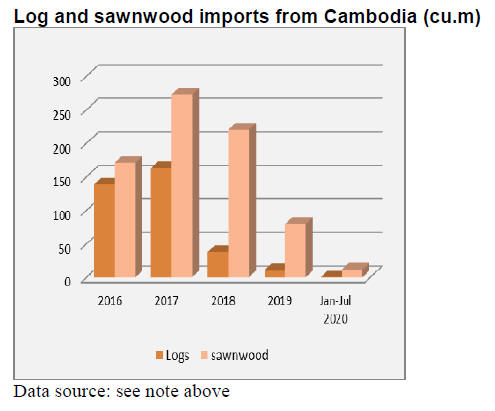
Log and sawnwood imports from Papua New
Guinea
PNG remains an important supplier of logs for Vietnam
and the volume of logs imported from PNG has been
increasing. Imports of sawnwood remain negligible.
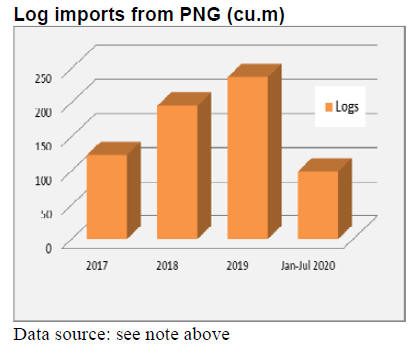
VNTLAS and the import of tropical timber
Among the African countries exporting timber to
Vietnam 8 are currently negotiating or have already
concluded VPA/FLEGT agreement with the EU
namely:
Cameroon: VPA/FLEGT signed in October
2010, effective from December 2011.
DRC: VPA/FLEGT negotiations started in
October 2010, not signed yet.
Cote d’Ivoire: Negotiations started in
February, 2013, not signed yet.
Gabon: Negotiations started in September
2010, not signed yet.
Ghana: Signed in November 2009, effective
from December 2009.
Liberia: Signed in July 2011, effective from
December 2013.
Republic of Congo: Signed in May 2010,
effective from March 2013.
See:
http://www.euflegt.efi.int/vpa-africa
In September 2020 the Vietnamese Government
issued Decree 102 guiding the implementation of
VNTLAS, which is central to the VPA/FLEGT
Agreement. This Decree contains a specific chapter
on the control of illegality risks associated with
timbers imported from high risk geographical areas
and of controlled species.
The list of high risk geographical areas and species
will be announced soon. When the list is available
customs-clearance procedures will be applied
relevant to the identified risk.

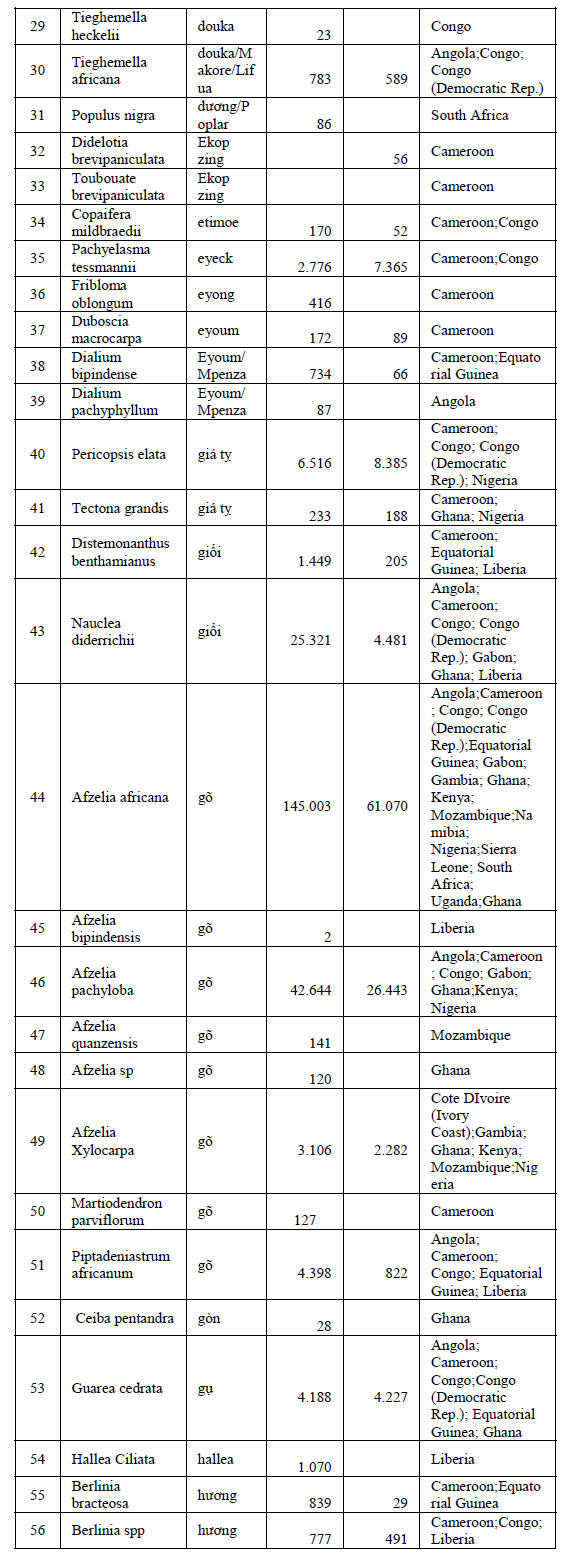
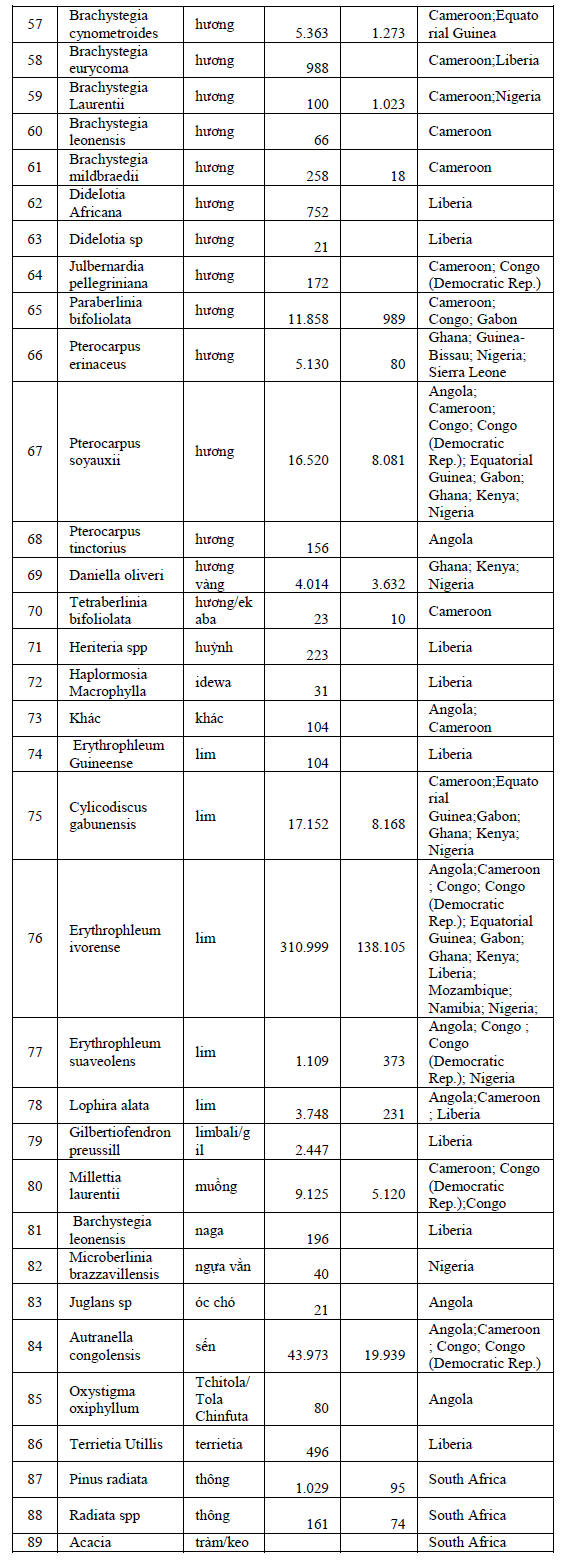
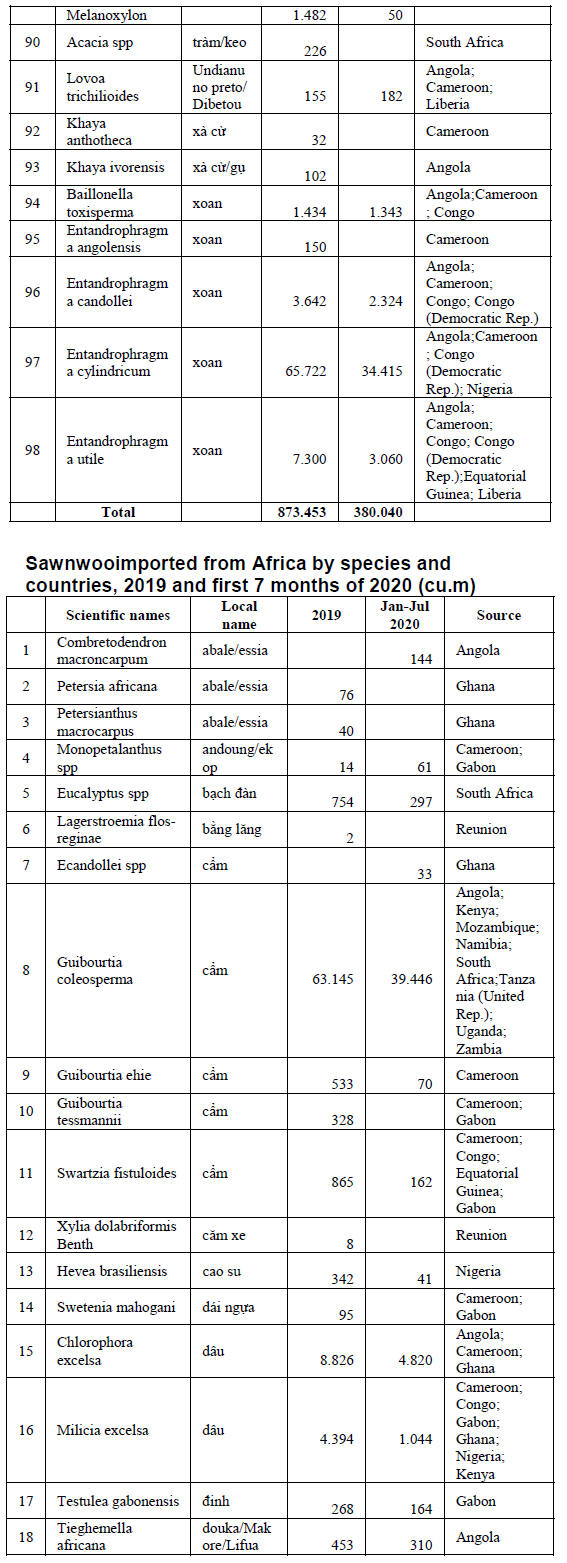
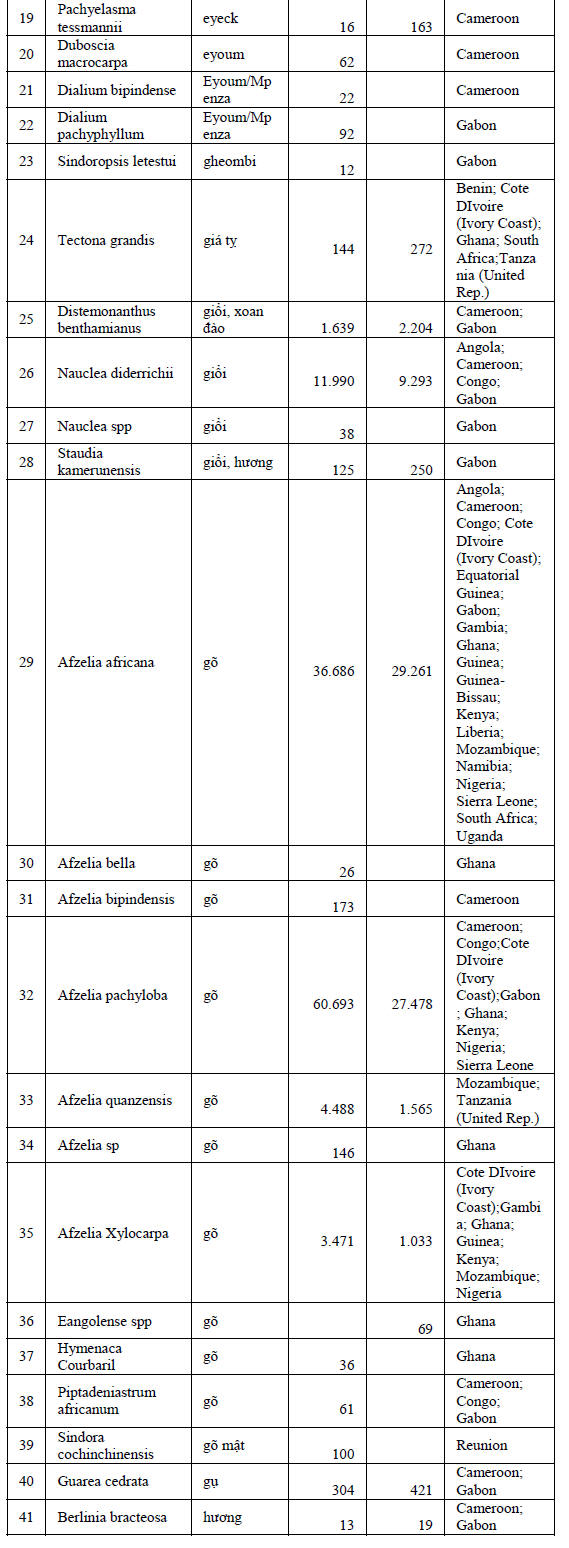
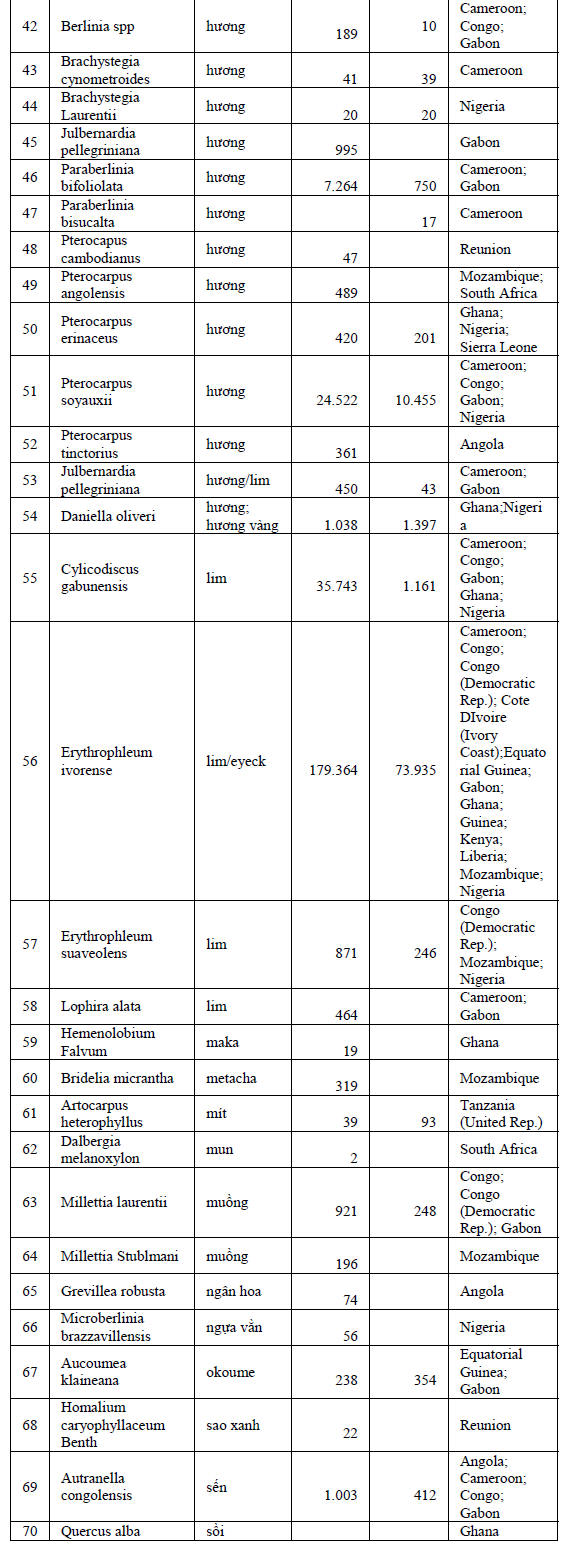
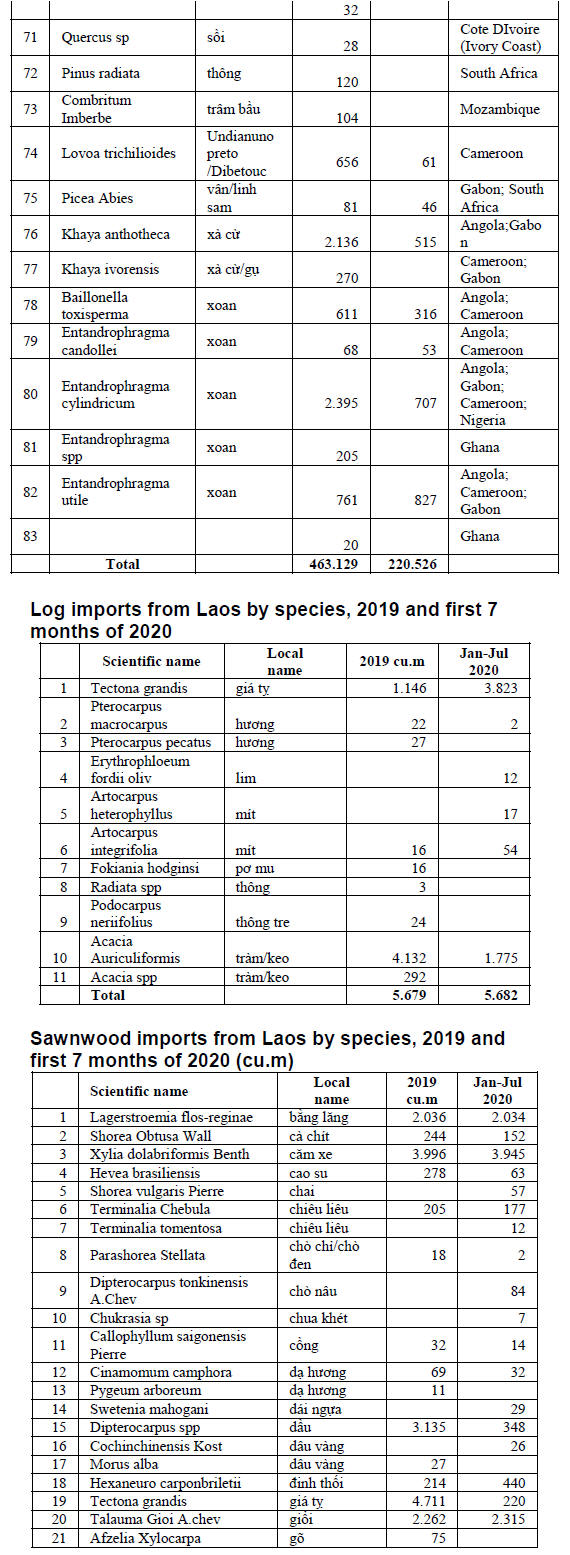



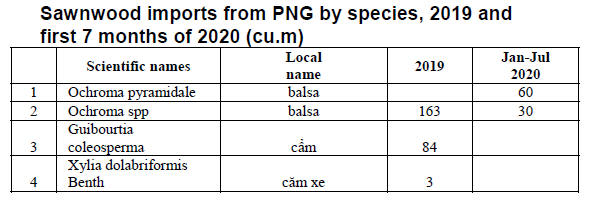
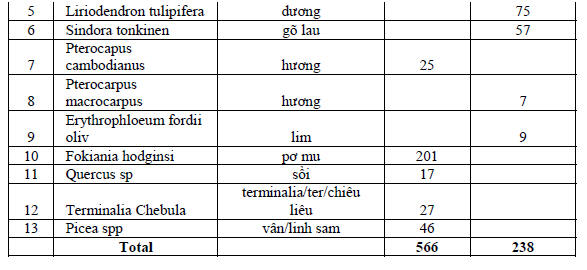
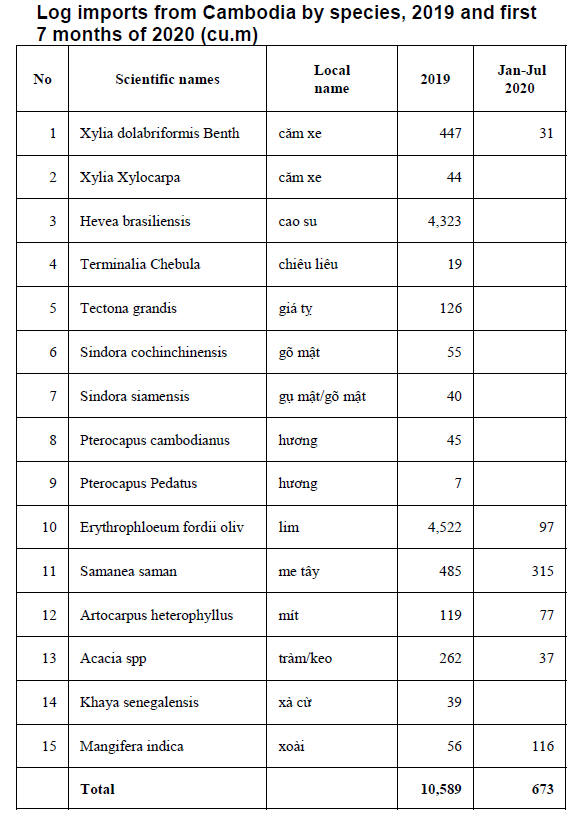
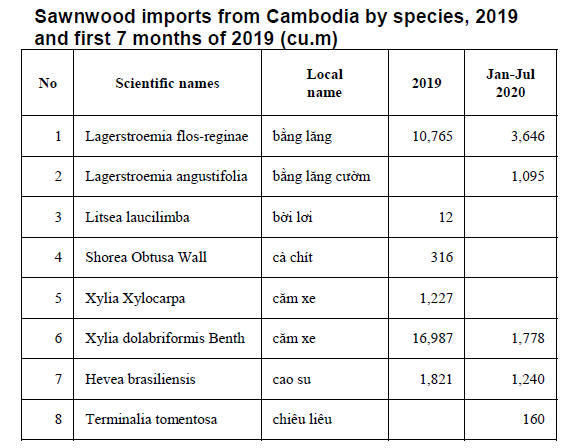
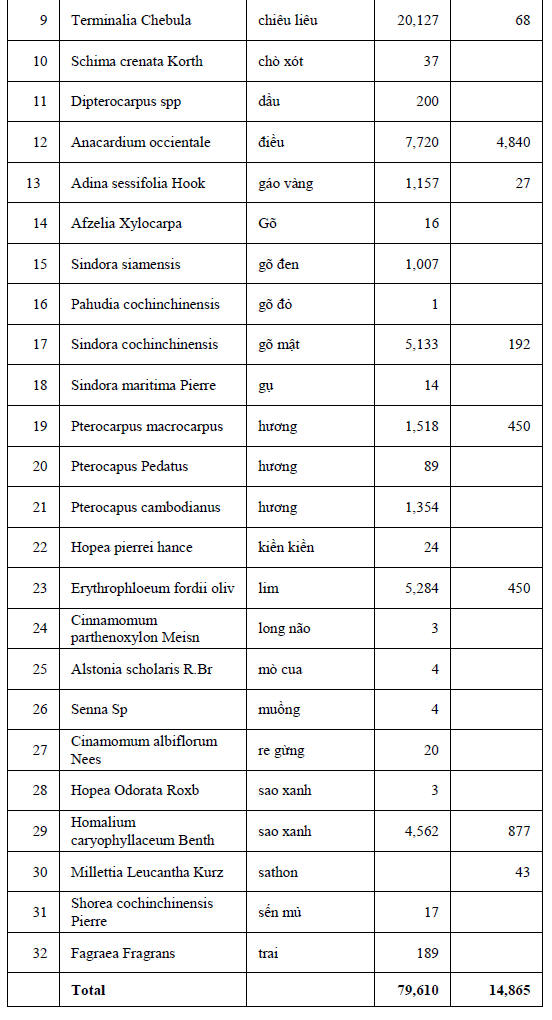
8. BRAZIL
Bento Gonçalves furniture cluster
recovery
The output and earnings of the Bento Gonçalves furniture
cluster in Rio Grande do Sul State continues to expand. In
the first three quarters of this year earnings topped R$1.5
billion, up about 6% compared to the same period of 2019.
This furniture cluster accounts for over 25% of the State
revenue. The performance in the 9 months to September
has lifted employment and production in the furniture
industry to pre-pandemic levels.
Sindmóveis (Furniture Industry Association of Bento
Gonçalves) says this performance was due to the gradual
resumption of activities after the intense restrictions on
production and movement of people, new consumption
habits and adaptation of the furniture industry to the new
scenario and government emergency measures that helped
maintain consumption.
However, there are still concerns says the Association
especially in relation to political and economic
uncertainties.
Also of concern is the significant increase in costs and
delays in the supply of inputs. This is mainly due to the
mismatch between supply and demand as sales have
recovered faster than production of necessary inputs due to
low stocks as well as rising input costs.
Sindmóveis argues that the furniture sector has not yet
fully recovered from the 2015-2016 crises and has been
struggling to resume levels and then the pandemic spread.
2019 was not a good year either, there was growth in
revenues but this did not necessarily represent real growth.
In 2020 the furniture industry has been able to move
towards a recovery. The number of jobs created in
September meant that the sector surpassed the jobs
numbers seen at the beginning of 2020.
Civil construction and export demand boosts sales
The resumption of civil construction and the increase in
exports both of which have benefitted from the exchange
rate depreciation have contributed to beginning of a
recovery in the Brazilian forest-based industry.
The signs of recovery can be seen in timber price
movements. Wood consumption fell in some segments
between March and May but prices were not affected and
from May there was a strong recovery in demand. The
wood panel and sawmill sectors which supply furniture
and civil construction demand were the ones that suffered
the most from the pandemic but the downturn was not
strong.
As for the National Forest Activity Costs Index (INCAF),
this increased by 1.1% in the third quarter, compared to
1.2% of inflation measured by the IPCA.
In the past 12 months the index registered an increase of
1.8%, compared to 3.1% for the inflation. Fuel, labour
costs, interest rates and foreign exchange changes make up
the index. In the short term, the evolution of INCAF does
not always reflects in the timber prices paid by the
industries/manufacturers which depend much more on the
relationship between supply and demand and the level of
building activity in the United States.
Brazilian wood product prices were competitive before the
pandemic so the real depreciation has added to this
competitiveness in international markets.
Export update
In October 2020, the value of Brazilian exports of woodbased
products (except pulp and paper) increased 32%
compared to October 2019, from US$222.6 million to
US$293.7 million.
The value of October pine sawnwood exports increased
29% year on year from US$36.6 million in 2019 to
US$47.1 million this October. In volume terms exports
increased 40.6% over the same period, from 190,600 cu.m
to 267,900 cu.m.
On the other hand, tropical sawnwood exports fell 2.4% in
volume, from 41,200 cu.m in October 2019 to 40,200
cu.m in October 2020 and in value terms exports declined
4% from US$16.6 million to US$15.9 million, over the
same period.
Pine plywood exports achieved a massive 60% boost in
October 2020 in comparison with October 2019 rising
from US$37.6 million to US$60 million. The volume of
exports jumped around 23% from 169,100 cu.m to
207,900 cu.m.
However, the volume of October tropical plywood exports
dropped 21% year on year from 8,000 cu.m (US$ 2.9
million) in October 2019 to 6,300 cu.m (US$2.6 million)
in October 2020.
The good news is that wooden furniture export earnings
increased from US$50.5 million in October 2019 to
US$57.2 million in October 2020, a 13% jump.
Argentina revises import procedures – seen as a
barrier by Brazilian furniture exporters
An announcement from Argentina on a change in its
import system, which is in fact a return to the nonautomatic
import license procedure for furniture, as well
as a reduction of the period of validity from 180 to 90 days
and the constant delay in the approval of these licenses has
caused astonishment in the Furniture Industry Association
of the State of Rio Grande do Sul (Movergs), an entity that
represents 2,750 companies that support around 34,000
direct jobs.
According to Movergs, trade in Brazilian furniture,
especially from Rio Grande do Sul state, one of the main
furniture exporting states, with Argentina has fallen year
after year and will be even more affected by these new
measures.
In 2010, Argentina was the second largest destination for
furniture exports from Rio Grande do Sul and in 2019
shipments to Argentina were worth US$943.9 million,
representing the seventh largest market destination for Rio
Grande do Sul furniture Between January and September
2020, exports continued to fall leaving Argentina in the
eighth position in the ranking of markets.
Movergs has approached the Argentine Embassy and the
Brazilian Ministry of Foreign Affairs suggesting
reconsideration of the changes. Movergs points out that
Brazil, Argentina, Paraguay and Uruguay are the founding
members of Mercosur and signatories of the 1991 Treaty
of Asunción, which among the objectives are the free
internal circulation of goods, services and products,
aiming at cooperation and development of the region.
Because of this it would be wise to seek alternatives that
expand cooperation between countries and to strengthen
trade relationships especially in light of the pandemic.
Big jump in roundwood exports over the past decade
Rough wood exports have grown over 9,500% over the
past ten years.
According to the Ministry of Economy Brazil shipped
977,000 tons of round wood in the period January to
October 2020. In the same period in 2010 exports were
just over 10,000 tons.
It is important to note that even the Covid-19 pandemic
exports of roundwood increased. The depreciation of the
Brazilian currency against the dollar made the Brazilian
wood products more competitive in international markets.
Another factor that contributed to the increase in timber
exports was the growth in international demand, mainly in
Asia.
Accessing international markets is still a challenge for
small producers who end up being limited to the local
industry and can only access export markets through
trading companies.
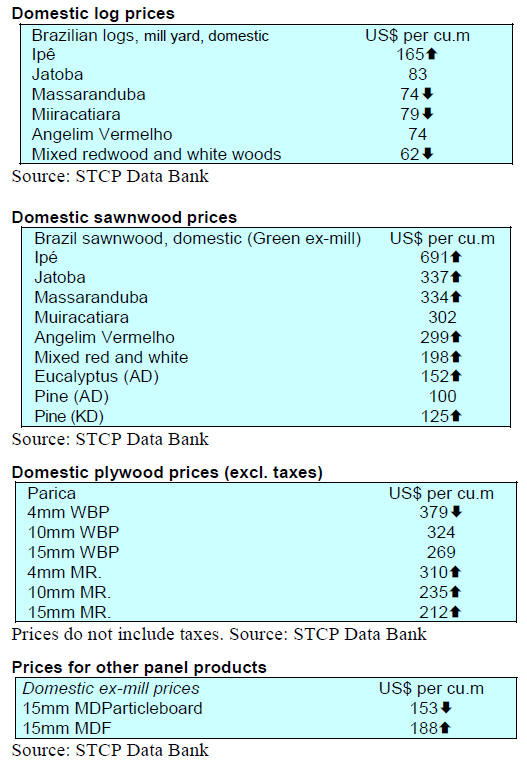
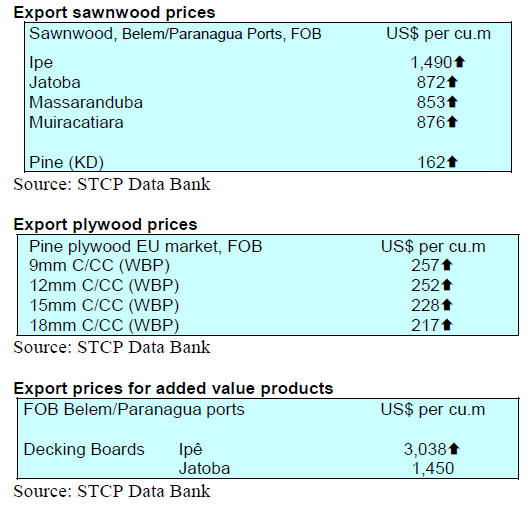
9. PERU
Timber industries – a driver of
national recovery
Speaking at a recent ‘El Cluster Maderero’ conference
during the Virtual Food Expo 2020, the president of the
Ucayali Wood Consortium (CEMU), Roberto Saveri, said
the timber industries represent one of the industrial
activities that can contribute to economic recovery in the
country.
The Amazonian forests are there ready to provide great
business opportunities for sustainable, profitable and
inclusive management for the benefit of the nation but, he
said, the forests of Peru are being lost as people demand
land for agriculture and forests are being degraded by
illegal activities.
To address deforestation and degradation requires action
by the State he said and expansion and strict control of the
forest concession system will harness private sector
resources to generate growth as well as offer the way
forward to conserve these natural resources.
The president of the Ucayali Regional Chamber for the
Secondary Transformation of Wood (Cresetmu), Davis
Scavino, reported on the participation of four of his
associates in ‘Expoalimentaria Virtual 2020’ and their
production of outdoor and home furniture as well as office
and kitchen items. He commented that the members are
working to achieve greater penetration of the domestic
local market.
Decline in export earnings but sawnwood exports less
impacted
According to data from the ADEX Commercial
Intelligence System, timber shipments between January
and August this year totalled US$54.5 million a
contraction of 32% compared to the same period in 2019.
Semi-manufactured products (US$32.3 million) were the
largest group of products shipped but earnings dropped
41%. Sawnwood exports (US$15.1 million) increased by
around 3%; construction product exports (US$2.4 million)
were down 46%; furniture and parts exports fell 22% to
US$1.9 million while veneer and plywood exports
dropped to US$1.6 million, a decline of around 13%.
Looking at just wooden furniture exports in the first nine
months of this year the Extractive Industries and Services
Management Division of the Association of Exporters
(ADEX) says shipments of wooden furniture and parts
dropped around 35% compared to the same period in
2019, the lowest figure for the last ten years.
Around 75% of wooden furniture exports in the first nine
months of the year was to the US. Other markets were
Italy (US$0.3 million) and Chile (US$0.2 million). In
addition, wooden furniture was exported to the Cayman
Islands, Panama, Bolivia, Greece, the Dominican
Republic, Australia and Qatar.
ADEX reported that in the same period there were no
exports to Uruguay, Paraguay, Mexico, France, Ecuador,
Aruba and South Korea.
